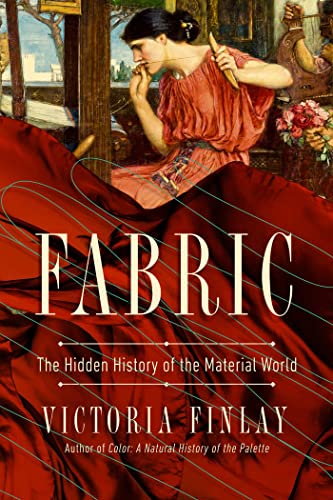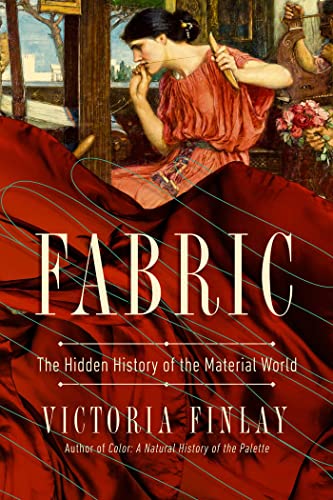Fabric: The Hidden History of the Material World is an intriguing book that delves into the various aspects of fabric and its significant role in shaping the course of history. This captivating literary work explores the hidden stories behind the creation, production, and impact of fabrics throughout the ages. From ancient civilizations to modern times, this book offers a comprehensive insight into the rich and diverse history of fabrics.
The author skillfully uncovers the intricate details of how fabrics have influenced societies, economies, and even politics. With meticulous research and engaging storytelling, Fabric: The Hidden History of the Material World sheds light on the evolution of fabrics, from their early origins to the present day. It explores the cultural significance of fabrics, their symbolic meanings, and how they have shaped human identity.
This thought-provoking book is a must-read for anyone interested in history, fashion, or anthropology. It offers a fresh perspective on the world of fabrics, revealing their hidden stories and the profound impact they have had on human civilization. Fabric: The Hidden History of the Material World is a fascinating journey through time, uncovering the untold tales of one of the most essential materials in our lives.
The Evolution of Fabric: A Journey Through Time
Fabric, a material we encounter every day, has a rich and fascinating history that spans thousands of years. From its humble beginnings to its current status as a staple in our lives, fabric has played an integral role in shaping human civilization.
Early Origins: The story of fabric begins in ancient times, when humans first discovered the art of weaving. Dating back to at least 6000 BCE, evidence of early textile production has been found in various parts of the world, including Egypt, Mesopotamia, and South America. These early fabrics were made from natural materials such as wool, linen, and silk, and were primarily used for clothing and shelter.
The Industrial Revolution: The advent of the Industrial Revolution in the late 18th century brought significant advancements in fabric production. With the invention of the power loom and the mechanization of spinning, fabric production shifted from small-scale cottage industries to large-scale factories. This led to increased production rates and the availability of fabric to a wider population, marking the beginning of the mass production era.
The Impact of Fabric on Society: From Fashion to Technology
Throughout history, fabric has influenced various aspects of human society beyond just clothing. The fashion industry, for instance, relies heavily on fabric as the foundation for creating garments that reflect cultural trends and individual style. From haute couture to fast fashion, fabric plays a crucial role in defining our personal identities and expressing creativity.
Fabric has also made significant contributions to the realms of architecture and interior design. From curtains to upholstery, fabric can transform the atmosphere of a space, adding warmth, texture, and visual interest. Additionally, fabric has been instrumental in advancements in technology, from the development of synthetic fibers for improved durability and performance to the creation of conductive fabrics for wearable electronics.
As we continue to rely on fabric in our daily lives, it is important to recognize its hidden history and the impact it has had on our world. From its early origins to its role in shaping fashion and technology, fabric remains an essential part of our material world.
Fabric: The Untold Story of the Material World
Publisher: Pegasus Books (November 8, 2022)
Language: English
Paperback: 528 pages
ISBN-10: 1639363904
ISBN-13: 978-1639363902
Item Weight: 1.02 pounds
Dimensions: 5.5 x 1.5 x 8.25 inches



